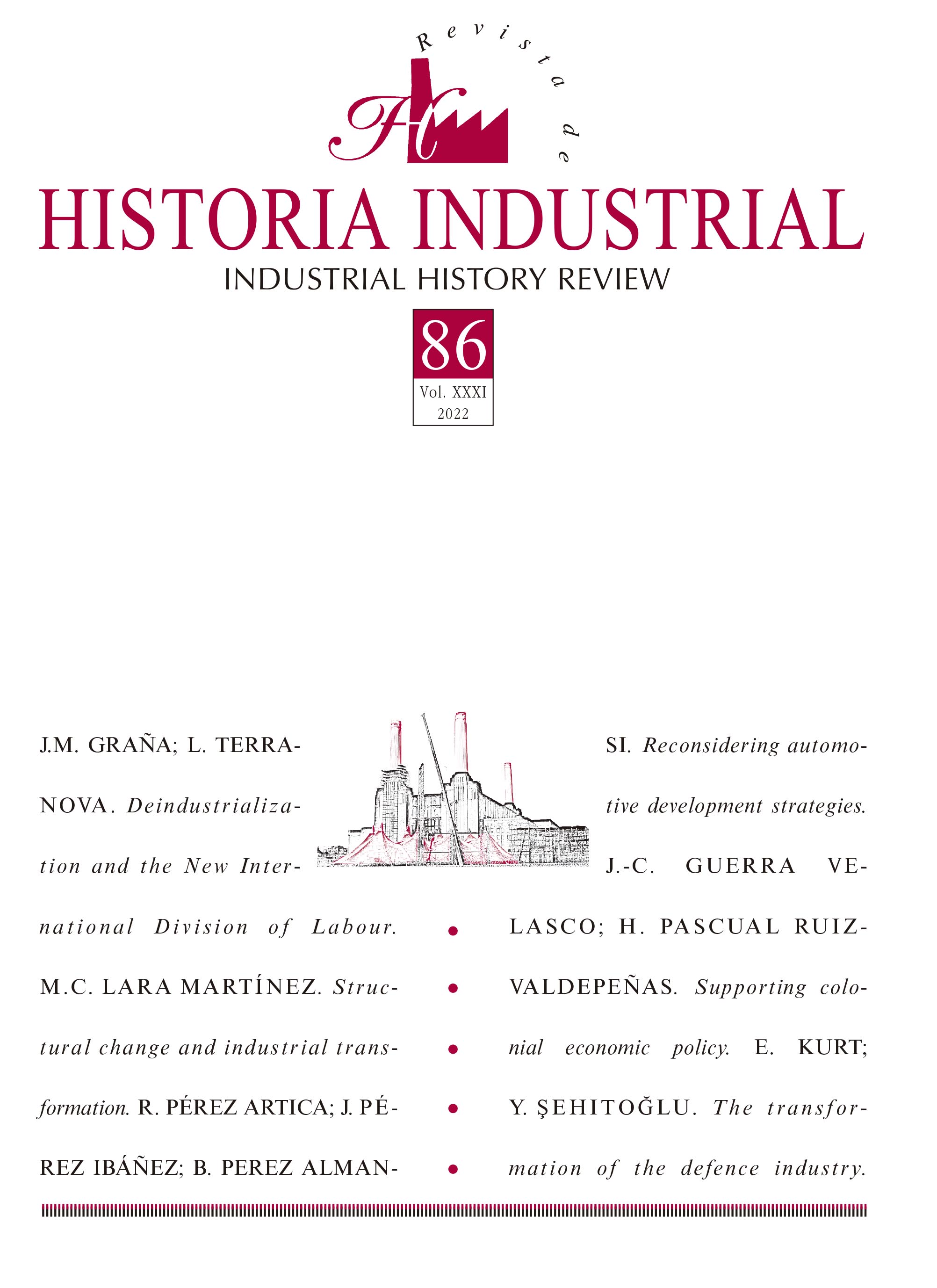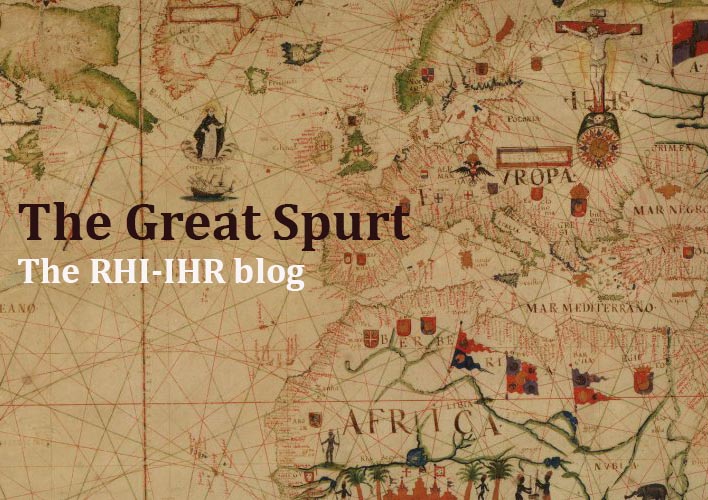Reconsidering automotive development strategies in Argentina in the light of the ASEAN experience
DOI:
https://doi.org/10.1344/rhiihr.38042Keywords:
Automotive Industry, Global Value Chains, Industrial policy, regional integrationAbstract
We compared the Argentinian automotive industry’s trajectory since 2000 with those corresponding to three ASEAN economies: Malaysia, Indonesia, and Thailand. We aimed to identify factors explaining the divergence among the four cases and to draw valuable conclusions for the re-design of Argentinian automotive policy. First, we considered the productive and foreign trade performance among the four cases. We then reviewed key industrial policies conducted over the period. Comparative analysis highlights the Thai experience, which posted outstanding performance on both industrial expansion and trade surplus. Moreover, we examined the high potential for selective policies incentivizing specific products and technologies, which can promote private strategies more aligned with macroeconomic stability and industrial development in Argentina.
Downloads
References
Arza, V. (2011). El Mercosur como plataforma de exportación para la industria automotriz. Revista CEPAL, 103, 139-155.
Baruj, G., Obaya, M., Porta, F., & Santarcángelo, J. (2017). Complejo Automotriz Argentino: Situación tecnológica, restricciones y oportunidades.
Burgos, M., & López, R. (Eds.). (2017). El nuevo modelo económico y sus consecuencias. Ediciones del CCC, Centro Cultural de la Cooperación Floreal Gorini.
Cantarella, J., Katz, L., & Monzón, N. (2017). Argentina: Factores que debilitan la integración de autopartes locales. En La encrucijada del autopartismo en América Latina (pp. 243-296). UNDAV Ediciones.
CEP. (2015). Fichas Sectoriales del CEP. https://www.argentina.gob.ar/produccion/cep
Chang, H.-J. (2006). Policy Space in Historical Perspective with Special Reference to Trade and Industrial Policies. Economic and Political Weekly, 41(7), 627-633. http://www.jstor.org/stable/4417841
Chen, S. (2014). The Political Economy of Industrial Development in Thailand. JAS (Journal of ASEAN Studies), 2(2), 62. https://doi.org/10.21512/jas.v2i2.297
Doner, R. (1991). Driving a bargain: Automobile industrialization and Japanese firms in Southeast Asia. University of California Press.
Doner, R. (2009). The Politics of Uneven Development: Thailand’s Economic Growth in Comparative Perspective. Cambridge University Press.
Doner, R. F., & Wad, P. (2014). Financial Crises and Automotive Industry Development in Southeast Asia. Journal of Contemporary Asia, 44(4), 664-687. https://doi.org/10.1080/00472336.2014.923635
Fernández, V. R. (2017). La trilogía del erizo-zorro: Redes globales, trayectorias nacionales y dinámicas regionales desde la periferia (Primera edición). Anthropos Editorial.
Gaggero, A., Gaggero, J., & Rúa, M. (2015). Principales características e impacto macroeconómico de la fuga de capitales en Argentina. Problemas del Desarrollo, 46(182), 67-90. https://doi.org/10.1016/j.rpd.2015.06.002
Global Trade Alert. (2019). Indonesia: 2019 presidential regulation to promote local EV industry. https://www.globaltradealert.org/intervention/73881/tax-or-social-insurance-relief/indonesia-2019-presidential-regulation-to-promote-local-ev-industry
Kohpaiboon, A. (2009). Global Integration of Thai Automotive Industry (N.o 16; Discussion Paper Series, p. 41). Faculty of economic Thammasat University.
Kulfas, M. (2016). Los tres kirchnerismos. Una historia de la economía argentina 2003-2015. Siglo XXI.
Malay Automotive Association. (2021). Market Review Press Release—First Half 2021. http://www.maa.org.my/pdf/2021/Market_Review_First_Half_2021.pdf
Natsuda, K., Otsuka, K., & Thoburn, J. (2015). Dawn of Industrialisation? The Indonesian Automotive Industry. Bulletin of Indonesian Economic Studies, 51(1), 47-68. https://doi.org/10.1080/00074918.2015.1016567
Natsuda, K., Segawa, N., & Thoburn, J. (2013). Liberalization, Industrial Nationalism, and the Malaysian Automotive Industry. Global Economic Review, 42(2), 113-134. https://doi.org/10.1080/1226508X.2013.791475
Natsuda, K., & Thoburn, J. (2014). How much policy space still exists under the WTO? A comparative study of the automotive industry in Thailand and Malaysia. Review of International Political Economy, 21(6), 1346-1377. https://doi.org/10.1080/09692290.2013.878741
Panigo, D., Gárriz, A., Lavarello, P., & Schorr, M. (2017). La encrucijada del autopartismo en América Latina. UNDAV Ediciones.
Pasha, M., & Setiati, I. (2011). A Case in International Production Networks and Trade Liberalization Indonesia Automotive Industry. En Studies in Trade and Investment (United Nations Economic and Social Commission for Asia and the Pacific).
Pinazo, G. (2015). El desarrollismo argentino: Una mirada crítica desde la industria automotriz. Universidad Nacional de General Sarmiento.
Pinazo, G., Cordoba, F., & Dinerstein, N. (2017). Un aporte a la discusión sobre la productividad laboral en la industria argentina. Cuadernos de Economía Crítica, 3(6), 101-125.
Pinazo, G., Dinerstein, N., & Cordoba, F. (2019). Sobre la industria automotriz, la productividad laboral y el pensamiento crítico.
Poapongsakorn, N., & Techakanont, K. (2008). The Development of Automotive Industry Clusters and Production Networks in Thailand. En I. Kuroiwa & M. H. Toh (Eds.), Production networks and industrial clusters: Integrating economies in Southeast Asia. ISEAS Pub.
Rapetti, M., Carreras Mayer, P., Brest López, C., & Sorrentino, A. (2019). Exportar para crecer. CIPPEC. https://www.cippec.org/publicacion/exportar-para-crecer/
Scholvin, S., Breul, M., Revilla Diez, J., & Rodríguez Pose, A. (2020). Introduction: Nodes in global networks. Growth and Change, 1-8. https://doi.org/10.1111/grow.12449
Schröder, M. (2020). Electric Vehicle and Electric Vehicle Component Production in Thailand. Gerpisa colloquium.
Schröder, M. (2018). Follow the leader? ASEAN members‘ policy towards electric vehicles with focus on Thailand. Gerpisa Colloquium, 14.
Sturgeon, T. J., Memedovic, O., Biesebroeck, J. V., & Gereffi, G. (2009). Globalisation of the automotive industry: Main features and trends. International Journal of Technological Learning, Innovation and Development, 2(1/2), 8-24. https://doi.org/10.1504/IJTLID.2009.021954
Sturgeon, T., Van Biesebroeck, J., & Gereffi, G. (2008). Value chains, networks and clusters: Reframing the global automotive industry. Journal of Economic Geography, 8(3), 297-321. https://doi.org/10.1093/jeg/lbn007
Suffian, F. (2020). The Politics and Institutional Arrangements in Malaysia’s Automotive Industry. Southeast Asian Economies, 37(1), 47-64. https://doi.org/10.1355/ae37-1c
Tai, W.-P. (2014). An Industry without Industrialization: The Political Economy of The Failure of Indonesia’s Auto Industry. JAS (Journal of ASEAN Studies), 2(1), 1. https://doi.org/10.21512/jas.v2i1.154
Techakanont, K. (2011). Thailand Automotive Parts Industry. En K. Mitsuhiro (Ed.), Thailand Automotive Parts Industry. Bangkok Research Center.
Techakanont, K., & Leelahanon, S. (2015). The Impact of Economic Crises on the Thai Automobile Industry. En B. Jetin, Global automobile demand. Major trends in emerging economies Vol 2. Palgrave Macmillan. http://www.palgraveconnect.com/doifinder/10.1057/9781137516176
Thoburn, J., & Natsuda, K. (2018). How to conduct effective industrial policy: A comparison of automotive development in the Philippines and Indonesia. Journal of the Asia Pacific Economy, 23(4), 657-682. https://doi.org/10.1080/13547860.2018.1503768
Treacy, M. (2018). Estrategias de acumulación de las cámaras empresariales automotrices argentinas y la integración productiva regional 2002-2015. Realidad Económica, 47, 109-147.
Wad, P. (2009). The automobile industry of Southeast Asia: Malaysia and Thailand. Journal of the Asia Pacific Economy, 14(2), 172-193. https://doi.org/10.1080/13547860902786029
Wainer, A., & Belloni, P. (2017). La solución de Cambiemos al estrangulamiento externo El remedio, peor que la enfermedad. Fundación Friedrich Ebert, DT Nro. 18.
Warr, P., & Kohpaiboon, A. (2018). Explaining Thailand’s Automotive Manufacturing Success. Southeast Asian Economies, 35(3), 425-448. https://doi.org/10.1355/ae35-3g
WTO. (2020). Indonesia Trade Policy Review. https://www.wto.org/english/tratop_e/tpr_e/tp501_e.htm
Downloads
Published
How to Cite
Issue
Section
License
Copyright (c) 2022 Revista de Historia Industrial — Industrial History Review

This work is licensed under a Creative Commons Attribution 4.0 International License.
The author assigns all rights to the publisher. Creative Commons
The author who publishes in this journal agrees to the following terms:
- The author assigns all intellectual property rights exclusively to the publisher for the entire duration of the applicable intellectual property rights.
- The publisher will distribute the texts under the Creative Commons Attribution License, which allows others to share the work, provided that they acknowledge the authorship, its initial publication in this journal, and the conditions of the license.





